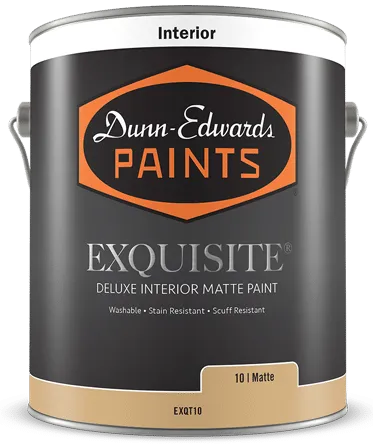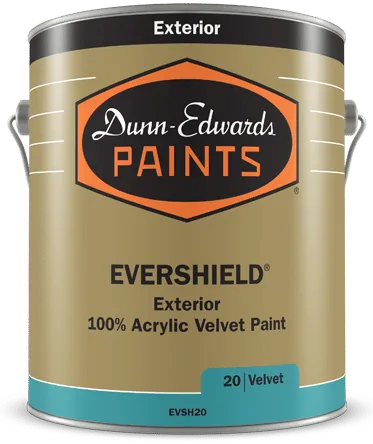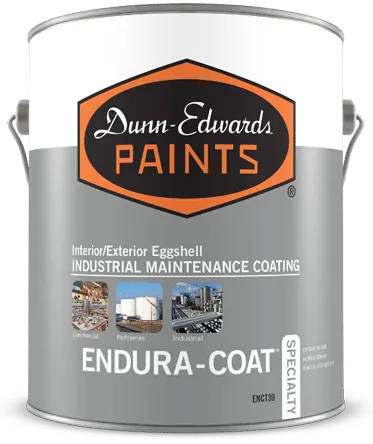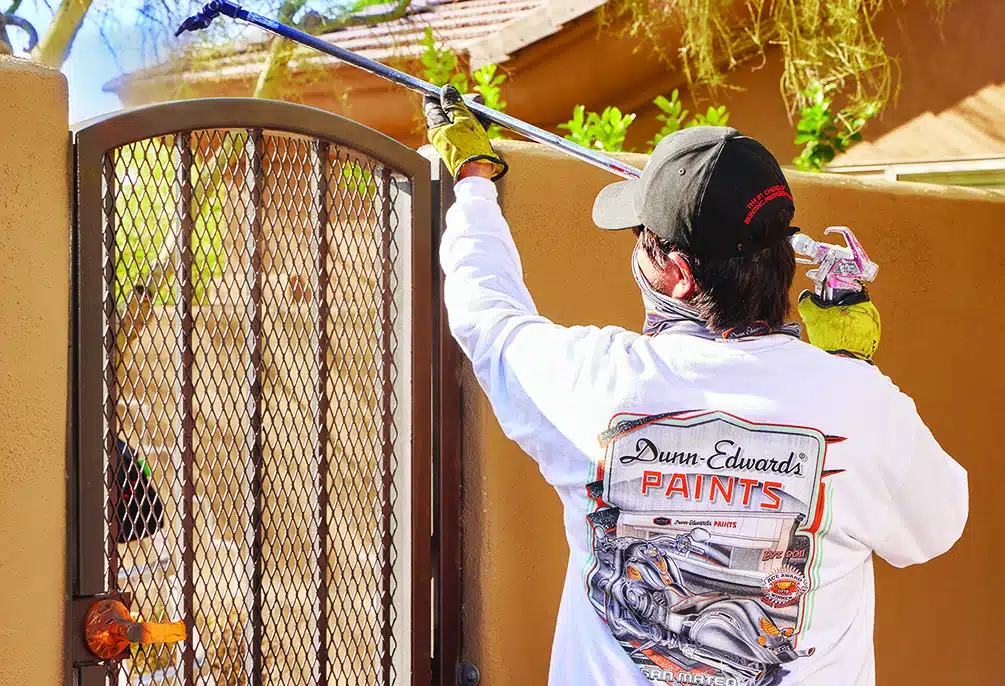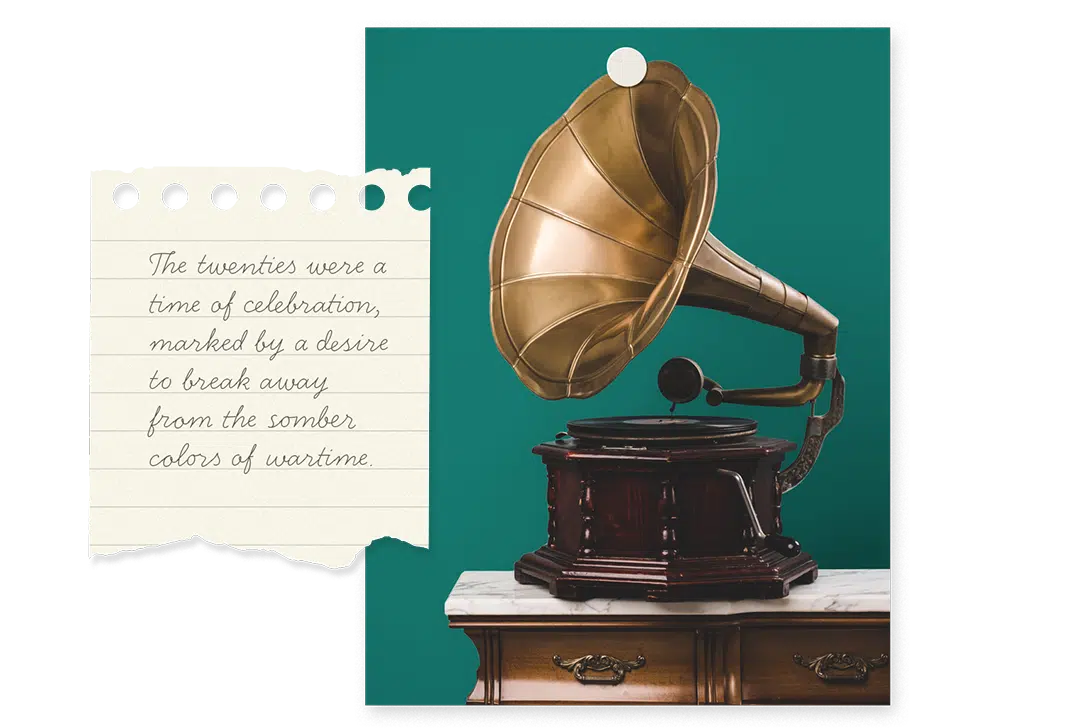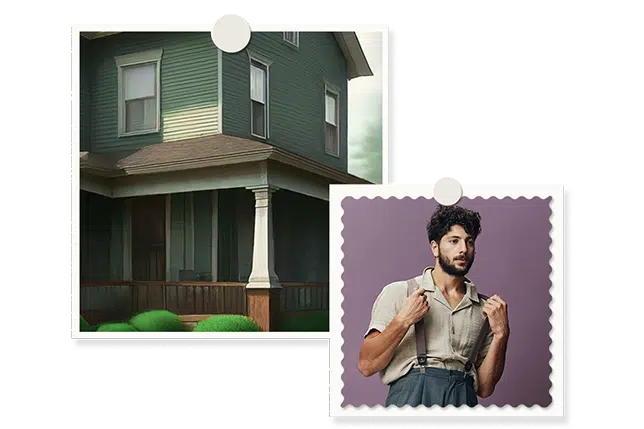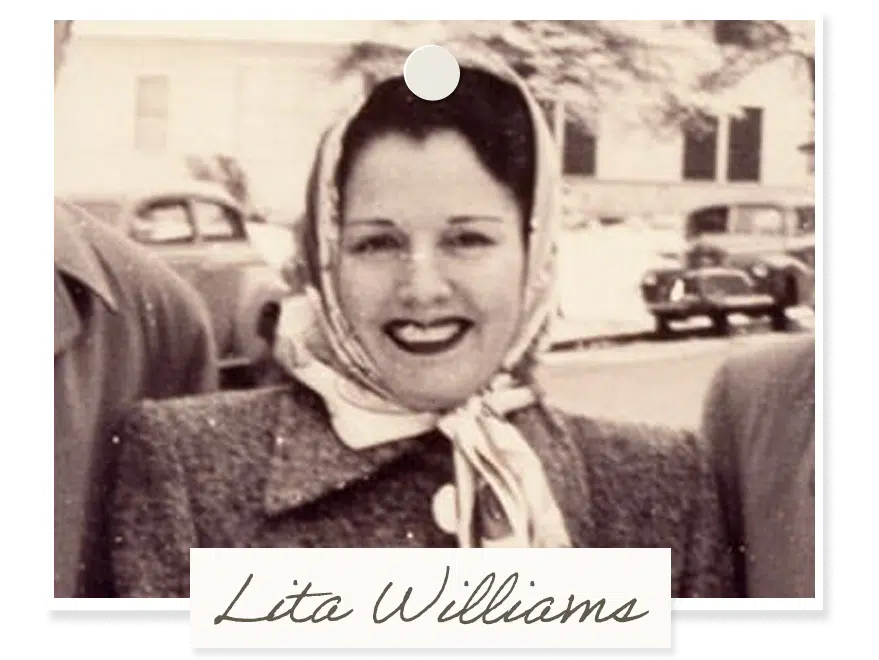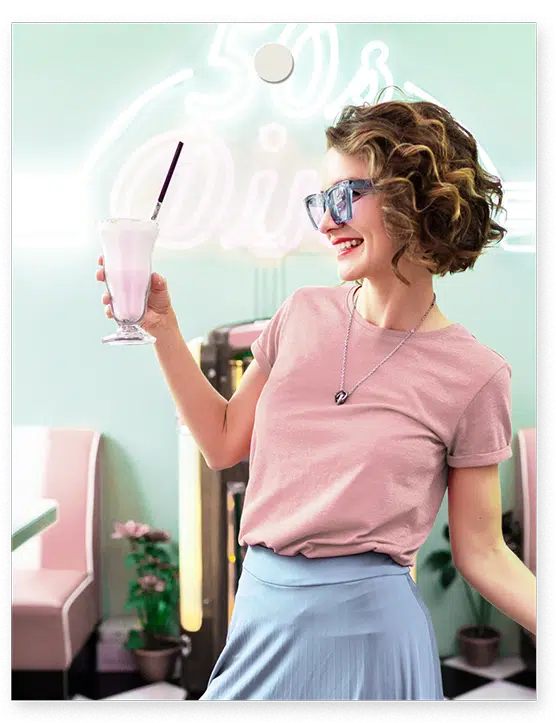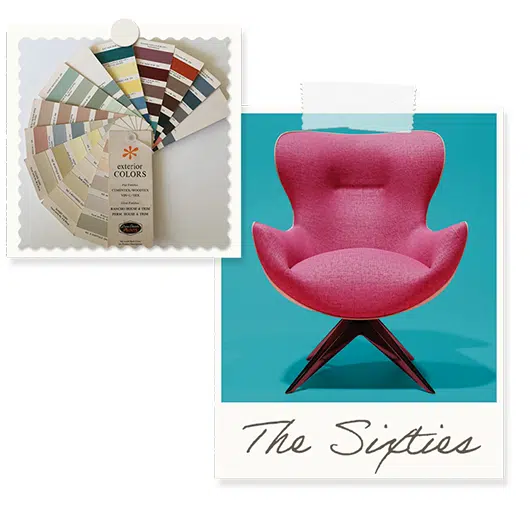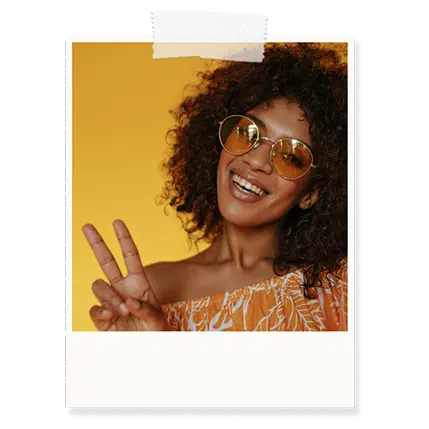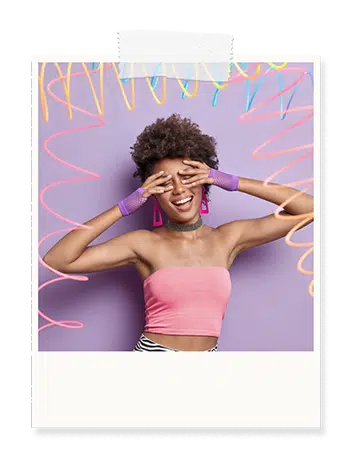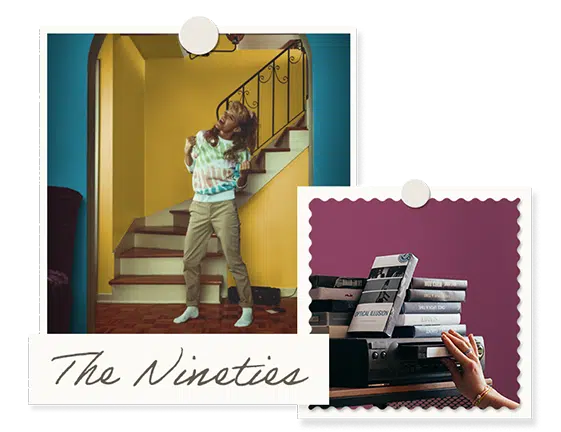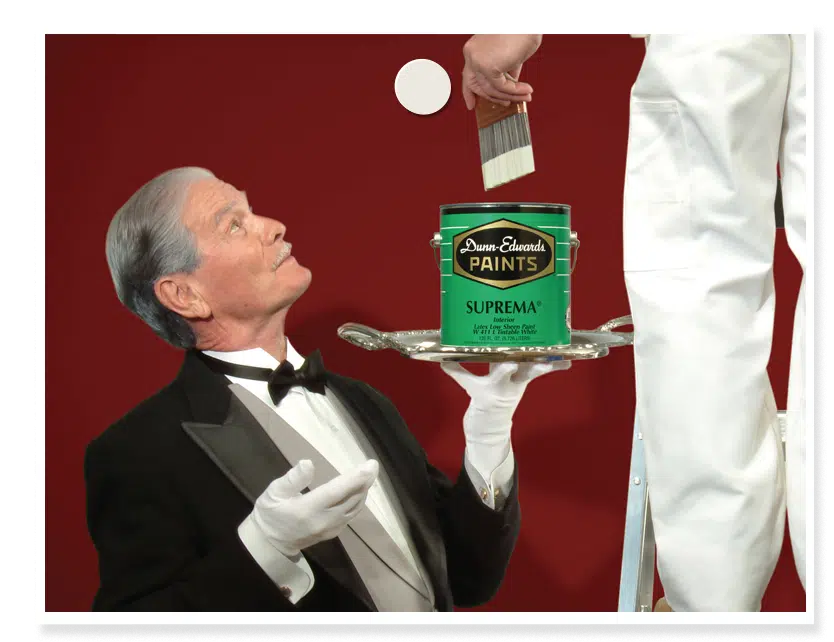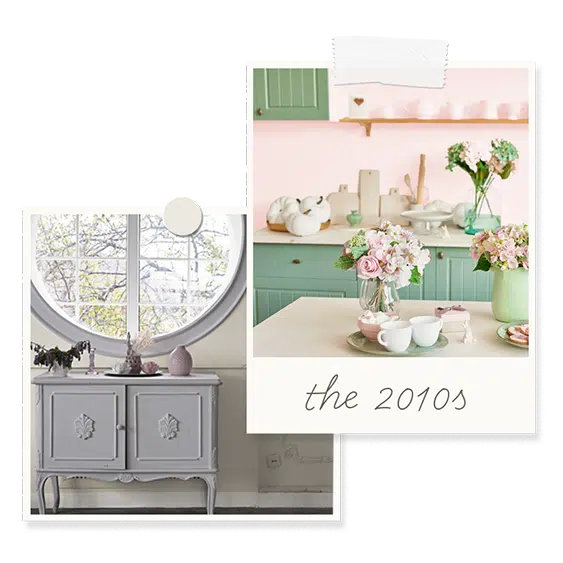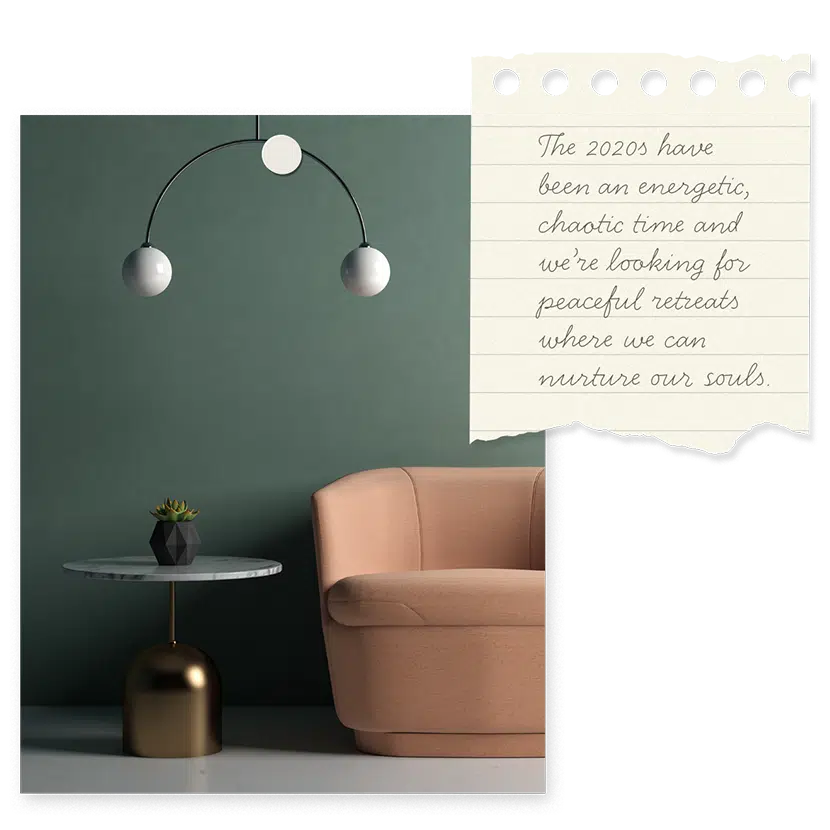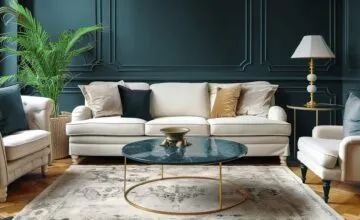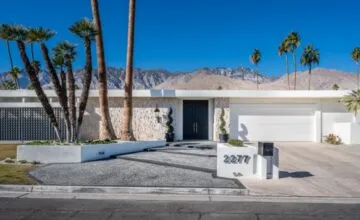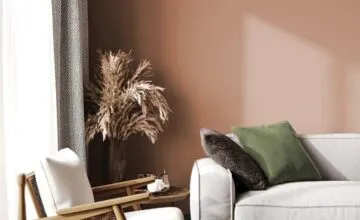Announcing the Colors of the Decades
02/11/2025 | Lauren Hoferkamp |
Dunn-Edwards has a powerful legacy of 100 years of service to people who paint. We are proud of our history of innovation: we've been at the forefront of color and design since 1925, and our greener by design® philosophy has guided us to lead in eco-efficiency along the way.
In celebration of our anniversary, we're taking a look back at color and innovation through the decades—how it's reflected society's state of mind and our hopes for the future. The Colors of the Decades Collection features 11 palettes that act as mini time capsules for every decade from 1925, all the way up to 2025.
This year, we’re releasing a new decade-inspired color palette every three weeks, starting on February 11. Be sure to follow us on Instagram to see the latest palette releases. Until then, here's a sneak peek at the decades we'll be featuring. Can you guess the colors in these palettes?
1925
Founded by Frank “Buddy” Dunn in 1925, our company began as a wallpaper store in Los Angeles. Inspired by the colorful papers he sold, Buddy expanded the business to include paint.
This decade was a time of unprecedented change, where color symbolized a break from the somber Victorian era and led us into a time of freedom, playfulness, and optimism. The flapper era, with its jazz-infused energy, embraced glitzy jewel tones like emerald blue-green and ruby red, with flashes of gold and pink.
1935
In the 1930s, Buddy Dunn partnered with Arthur C. Edwards to form the Dunn-Edwards Corporation. Then, for the first time in the company's history, paint sales surpassed wallpaper sales, and Dunn-Edwards began manufacturing its own paint.
During this decade, the economic hardships of the Great Depression brought a shift towards more subdued and practical color palettes. As resources became scarce, we sought comfort and stability in more muted, chalky colors.
1945
In the 1940s, World War II brought about a focus on practicality and resourcefulness. During this time, paint was often rationed, leading to a preference for colors that could be easily repainted or reused. There was a renewed appreciation for patriotic colors in home decor, although these took the form of darker, more serious versions of their primaries.
The years during the war were difficult, and many Dunn-Edwards employees were drafted into the military. Raw materials were in short supply, though the company did make government-specification paint, so it was able to get enough raw materials to meet customer needs. In this decade, Dunn-Edwards also hired Lita Williams, who would later become our first ever color consultant ... the beginnings of a department that would completely transform how we help customers select paint color.
1955
In the 1950s, the post-war era brought a renewed sense of optimism and prosperity, leading to a resurgence of lighter, brighter colors. Punchy pastels like pink, mint green, baby blue, and yellow reflected a happier and more playful mood. .
During this decade, we added two new water-based paints to our product line, and took the unprecedented step of discontinued our last remaining lead-based paint, 24 years ahead of the ban by the federal government.
1965
The 1960s were a time of social and cultural upheaval, with a psychedelic explosion of color. The counterculture movement embraced bold, saturated colors like orange, green, and magenta, often combined with psychedelic patterns and tie-dye techniques.
Dunn-Edwards expanded significantly during this decade, opening 10 new stores throughout California and Arizona to meet the needs of a growing population who came in search of more job opportunities and sunshine.
1975
Growth and innovation at Dunn-Edwards continued during the 1970s. Our company reached a major milestone—surpassing $60 million in revenue and continuing to innovate in eco-efficiency. In this decade, we discontinued the use of mercury biocides in latex paints, 11 years ahead of the partial ban by the EPA.
Often referred to as the "Me Decade," the 1970s saw a renewed focus on individuality and self-expression. This was reflected in architecture as well as color. Colors leaned towards the warm, earthy end of the spectrum, and fashion and home decor explored exotic prints and eclectic styles.
1985
After the bold colors of the 1960s and the earth tones of the 1970s, we were ready to lighten up. The 1980s was a period of economic growth and optimism, and pastels reflected this positive mood. In terms of architecture, Art Deco's association with luxury and glamour resonated with our return to materialism, and it saw a resurgence during this time (in particular, the subset of Art Deco known as Tropical Deco).
During this time, Dunn-Edwards expanded into New Mexico and Texas, and became one of the first manufacturers to voluntarily replace ethylene glycol (EG) with propylene glycol, a more environmentally friendly paint ingredient.
1995
The fall of the Berlin Wall and economic fluctuations in the 1990s ushered in a period of uncertainty. Society's more serious mood was reflected in a darker palette. In addition, the influx of people moving back into the cities led to a trend of industrial aesthetics and dark neutrals, accented by rich jewel-tones.
The 1990s were a decade when Dunn-Edwards innovated with several new product launches including: Endurawall, Enduraseal, and W 704 Acri-Flat. It was in this decade that we also launched SIERRA®, our first low odor, zero VOC paint.
2005
The new millennium ushered in a digital age, with technology playing an increasingly important role in our lives. The faster pace of information created the need for a counterbalance—where calmer, rustic colors and design created peaceful retreats that let us unwind.
During this decade, Dunn-Edwards saw a lot of changes as well: we formed a joint venture to produce and distribute recycled latex paint, our 100th store opened, and for the first time ever, our company became employee-owned.
2015
During this decade, home renovation shows reached their peak and the shabby chic style was everywhere. Featuring distressed wood, vintage finds, and a softer, more romantic color palette, this look appealed to our need for a lighter, paler palette that felt calm, yet whimsical.
As the pace of change quickened around the world, growth at Dunn-Edwards continued: we were the first paint company to use the RAVOC rating system, we opened the world's first LEED® Gold-certified paint manufacturing facility in Phoenix, Arizona, and we merged with Nippon Paint Holdings Co., Ltd.
2025
In our current decade, we find ourselves overwhelmed by information and disinformation, climate change, and social media. The longing to give our eyes and souls a rest brings us a palette that is sophisticated, yet down to earth. The colors in the 2020s palette give us space to decompress and contemplate life, a luxury in today's always-on, always-changing social landscape.
Although we're only halfway through the decade, Dunn-Edwards has already made some big advancements: we announced new products such as EXQUISITE®, SOLID-COLOR, DURA®, and DUNN'S® Paints, and we launched the Dunn-Edwards Foundation, a non-profit organization that provides professional training and community beautification projects to underserved communities.
As we look back on our history, we're proud that every aspect of our business—from product development and sales to color consultation—has been in service of architects, designers, and people who paint. And we’re excited to continue our mission and develop new palettes as we move forward, colorfully, into the next 100 years.
Featured Articles
-
Announcing the Color of the Century - Viridian Odyssey (DE1925)
-
Best Oranges for the Perfect Summer Beach Cottage
-
Get Ready for Fall with These Trendy Color + Design Moods
-
Try These Color Palettes To Nail A Tomato Girl Summer At Home
-
Embracing Barbiecore: Popular Pinks Throughout The Ages
-
The Color Yellow: Essential Color Theory, Symbolism and Design Application



